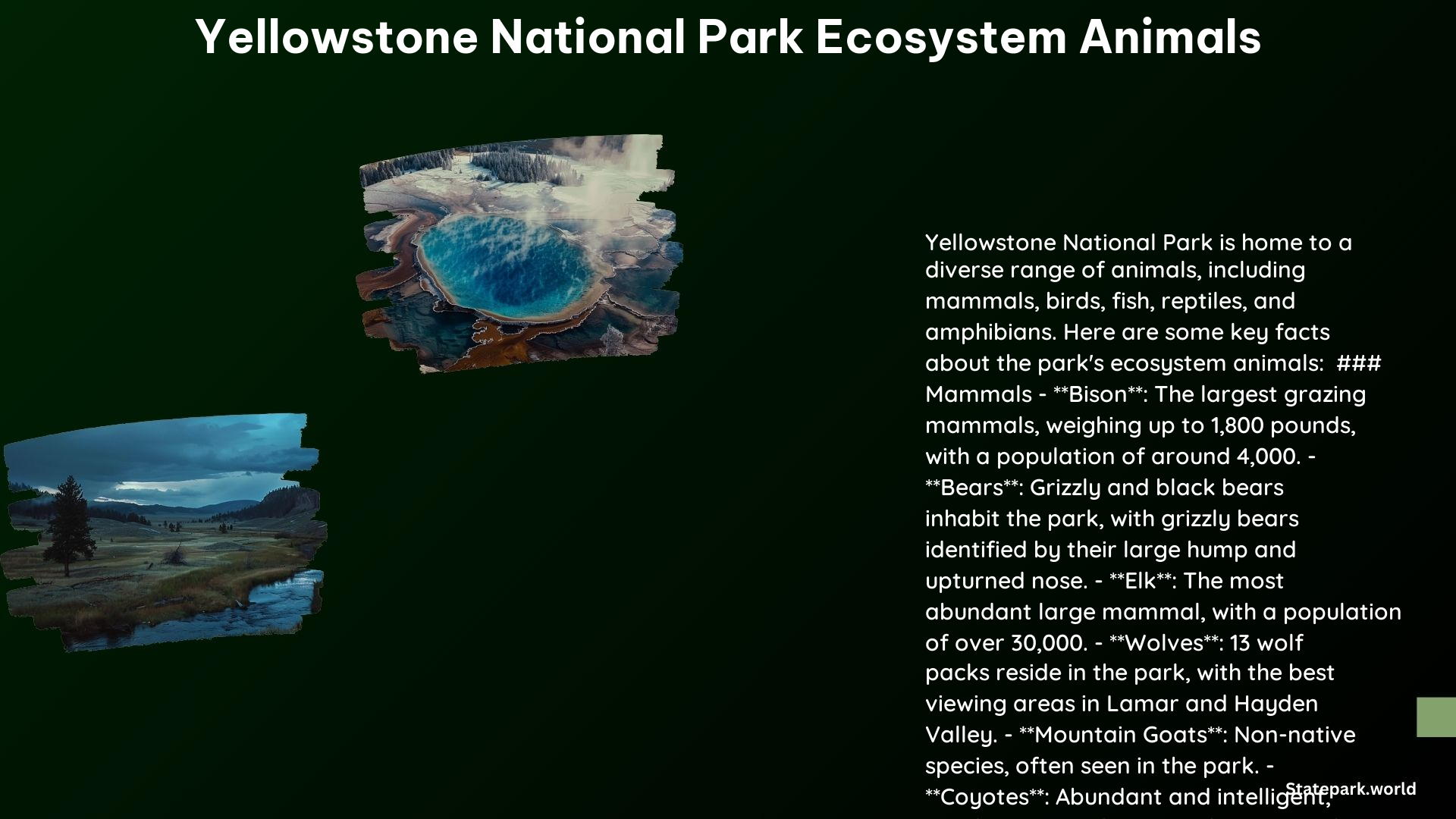Yellowstone National Park is renowned for its diverse and abundant wildlife, with nearly 300 species of birds, 16 species of fish, five species of amphibians, six species of reptiles, and 67 species of mammals. The park’s ecosystem supports a wide variety of animals due to its unique habitats and seasonal cycles of movement.
Mammals of Yellowstone
Bears
Yellowstone is home to two species of bears: grizzly bears and black bears. Grizzly bears are the most sought-after mammal to see, identified by their large hump above the shoulders and a slightly upturned nose. They are larger than black bears and can be found in Hayden and Lamar Valley during early morning and late evening hours. Black bears are also present in the park, although less common.
Wolves
There are currently 13 wolf packs in the park, with the best areas to view them being Lamar and Hayden Valley during early morning and late evening hours. Wolves are highly intelligent and should be treated with respect, maintaining a safe distance of at least 100 yards.
Moose
With over 400 moose in the park, they can be found in marshy areas, including lake shores and along rivers. Moose are solitary and can live up to 20 years in Yellowstone, feeding on willows and aquatic vegetation.
Elk
Elk are the most abundant large mammal in the park, with a large population that migrates across the park to find the best plant growth. They are known for their impressive antlers and can be seen during the early and late hours of the day.
Bison
Yellowstone is the only place in the lower 48 states where a population of wild American bison has persisted since prehistoric times. Bison are the largest grazing mammals in the park, weighing up to 1,800 pounds for males and 1,300 pounds for females. They are nomadic grazers and can be found in various areas of the park, including the Lamar Valley and Hayden Valley.
Mountain Goats
Non-native mountain goats inhabit the park, often seen in the mountainous regions.
Birds of Yellowstone

Bald Eagles
Bald eagles are common in the park, particularly in the Hayden Valley and Madison River areas. They are the tallest birds in the park, standing about 4 feet high, and can be seen foraging in open grassland areas.
Osprey
Osprey migrate to Yellowstone in the spring to hunt fish and build nests. They can be seen in trees or pinnacles close to the water, laying two to three eggs in May or June.
Mountain Chickadees
These small songbirds are common in the mountains of western North America and can be found in Yellowstone. They are known for their distinctive “chick-a-dee, dee, dee” call and are omnivorous, feeding on plants, insects, and small fruits.
Sandhill Cranes
Sandhill cranes are another common bird species in the park, known for their distinctive calls and large size.
Safety and Viewing
When visiting Yellowstone to observe the diverse wildlife, it’s important to follow safety guidelines:
- Bring bear spray, binoculars, and spotting scopes to safely view wildlife from a distance.
- Maintain a safe distance from wildlife, with at least 100 yards from bears and wolves, and at least 25 yards from bison, elk, and other wildlife.
- The best time to visit Yellowstone for wildlife depends on your interests. Spring is ideal for spotting baby animals, late September through early October is best for hearing the bugle of bull elk, and winter is excellent for spotting wildlife against the white landscape.
References
- https://destinationyellowstone.com/wildlife-of-yellowstone/
- https://en.wikipedia.org/wiki/List_of_animals_of_Yellowstone
- https://www.nps.gov/yell/learn/nature/wildlife.htm
- https://yellowstonenationalpark.com/wildlife.htm
- https://www.nps.gov/yell/learn/nature/mammals.htm
